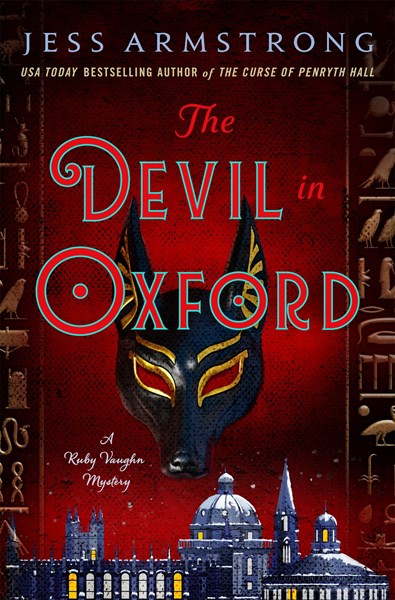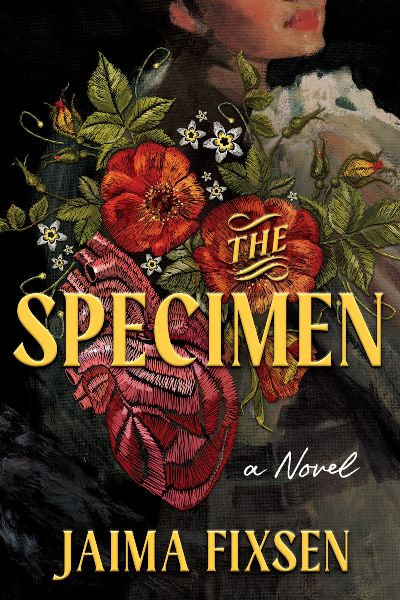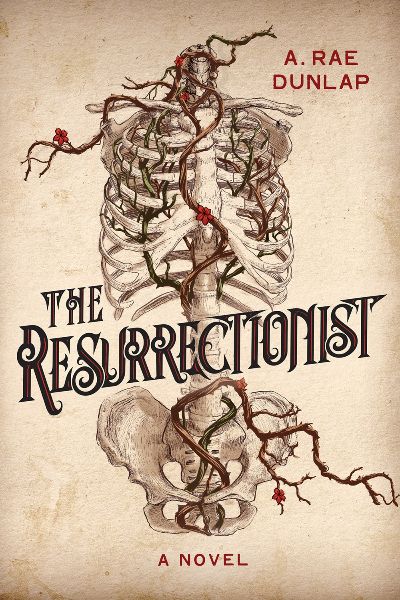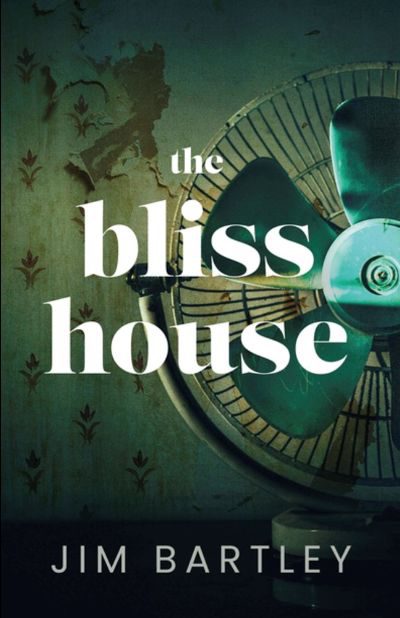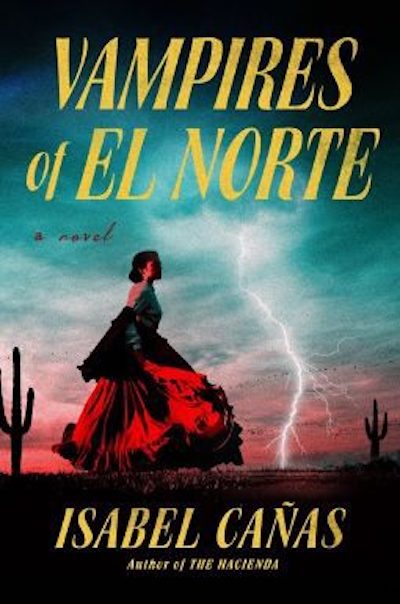Christmas in Oxford sounds like a good idea. But as might be predicted by anyone acquainted with Ruby and her housemate and employer, Mr. Owens, that is likely a false assumption. While antiquarian books are their business, the Oxford sojourn highlights Egyptian artifacts and brings Ruby back to the harsh memories of her WWI service as an ambulance driver. Her feelings for Ruan, healer and witch, must be confronted, as must her trust in old and dear friends, including Leona, her partner in ambulance duties. Circumstances require much late-night skulking involving lockpicks and a reluctant Ruan as a partner, as well as attendance (unwilling) at overblown parties.In the end, the heroes are found and the evildoers are truly evil, but as with many books in this series, reading is easier if one starts at volume one. Smuggling, murder, and cocaine are mixed within a roiling undercurrent of social and political tension in an atmosphere of scholarship. A nicely drawn period piece.
Gothic
Locals call small-town Juliana, Georgia, “Gentle Juliana.” New York chef Bille Hope calls it her family’s best chance at a new start after the pandemic finished her restaurant. The offer to move to Juliana is incredibly generous: the ad Billie spots says that the family can buy any vacant home in the town—look at those Victorian mansions!—for just $100 if they open a business there. Billie; her husband, Peter; and their daughter, Mere, are Georgia residents before you know it and even purchase a fabulous house that wasn’t supposed to be available. In no time, Billie’s new restaurant is booming, but so is the family’s fear that they have made a bad mistake. The house has a malevolent feeling and Peter is exhausted and depressed by his never-ending search for a dangerous open well that a strange neighbor tells them is on the land. While Billie begins to fall for the owner of the store next to hers, she also starts to investigate what’s really going on in the town and why she and Mere have the same nightmares about trapped, crying children, a puzzle that readers know a little about from the book’s sinister opening chapter detailing an event in the town’s early years. This has just the right amount of creepiness to add a scary but not terrifying element to the promised gothic tale, and the post-pandemic what-do-I-do-now feeling is spot on. Read this alongside Sylvie Perry’s The Hawthorne School and start looking gift horses in the mouth.
Fans of Philadelphia’s Mutter Museum and of unsettling fiction are ideal audiences for Fixsen’s “STEMinist” latest. The author introduces Isobel Tait, a desperate nineteenth-century Edinburgh mother. Her only child, a sweet boy named Thomas, is sickly, out of breath at the least exertion. When Isobel finally gets him to see an expert, the renowned Dr. Burnett, the boy’s condition is confirmed to be dire: his heart has a damaged valve and his life will be short. Then Thomas disappears. Frantic Isobel tries everything to find him, but it’s all futile and the police have no leads. When she gives in to a ladies excursion to Dr. Burnett’s display of medical oddities, a tiny, preserved human heart emits—to Isobel’s hearing only—the distinct rhythm that Thomas’s did (the music teacher in Isobel would know it anywhere). What follows is an absorbing and expanding mystery around what happened to Thomas and others like him, as well as an in-depth look at the work of resurrectionists—those who procured and used dead bodies to teach and learn anatomy, with competition for bodies fierce and lucrative. The story is based on real events detailed in an afterword by the author. This is ripe for a bookclub discussion on medical ethics.
The ultra-wealthy Wieland family seems determined to prove that money can’t buy happiness. Their pain-filled past has created a persistent myth that they’re cursed, with family members dying in spectacularly awful ways, including on the Titanic. The deaths all happen in April, and as this absorbing thriller opens, so does that terrible month. Orphaned by the curse, or so she believes, is Clara, who’s long suffered from bulimia and lives in a house on the grounds of her family’s compound in Maine. In the neighboring mansion, Vantage Point, live her brother, Teddy, and his wife, Jess, who’s Clara’s best friend and formerly a poor local. Teddy is running for the U.S. Senate and the stakes are high for the family to portray a happy, successful front, which means keeping the uninhibited Clara mostly hidden. But someone has other ideas, and a brutal sex video is released to the public featuring a much younger, drunk, emaciated Clara (details are very much on the page). It’s the first in a line of humiliating videos that Clara thinks are fake but can’t be sure, making technology an interesting plot point alongside the family turmoil. Sligar’s character creation and portrayal of family and class dynamics are superb, adding to a realistic and gripping tale with a satisfying ending.
As the third son of a modestly landed family, James Willoughby has been told from an early age that he must earn a living befitting his station. Being of “a diminutive stature,” James decides the military is not for him. Nor is the Church of England an appealing option. Despite his family’s opposition, the young man abandons his clerical studies at Oxford and heads north to Edinburgh to become a physician. It’s 1828, the Age of Enlightenment, and the Scottish city is a “shining beacon of medical discovery.” But James quickly learns that if he wants to develop anatomical knowledge and surgical skills, he must join one of the private schools in Surgeon’s Square. Unable to afford the additional tuition, James makes a bargain with his professor’s secretary and dissectionist, the charismatic Aneurin “Nye” MacKinnon, to serve as a lookout to prevent possible grave robbing in the Greyfriars kirkyard (graveyard) beneath James’s chamber window. The naive student soon discovers that he is aiding a gang of body snatchers who steal fresh corpses from churchyards for anatomical study at the medical schools. Nye explains to a horrified James that he is a Resurrectionist: “Our motivation is not in the value of the bodies we steal, but in the second life we give them.” Bedazzled by Nye’s scientific passion (and his dark sexiness), James plunges into this illicit, gritty underworld. However, their rivals in the body-snatching game, the sinister Burke and Hare, will murder anyone to corner the corpse market. Mixing a macabre gothic mystery with a sensitive coming-of-age tale and a touching queer romance, Dunlap has written an exciting, well-researched debut historical adventure. Bizarre, authentic details, like the mortsafes, or cages, that grieving families installed to protect the graves of their loved ones, make for an unforgettable read.
Some books end with a recipe for a cake or cookie that was mentioned in the story along with nice characters in pleasant surroundings. Then there’s Graveyard Shift. No nice characters, definitely no twee surroundings, and the back matter has two lists: one of songs including “Nightmare” by the Rats and “Bury Me with It” by Modest Mouse (you’ll note the vermin theme) and recipes for cocktails including Corpse Reviver #1. The novella drops readers right into the horror, which brings together the kind of eclectic bunch gathered by a smoking habit. These insomniacs and late-shift workers meet nightly for a smoke in the graveyard of a college town’s dilapidated church, where they witness the dumping of something very unexpected and even more horrible than they would have imagined. Edie, the relentless journalist in the group, seeks answers, aided by bartender Theo, who’s witnessed one of the other weird goings on in the town. Called “Hostile Incidents,” these are instigated by so-called Belligerents, the several “weary, mild-mannered” people who have gone “suddenly berserk.” Readers will want to get their shaky hands on Rio’s previous work, If We Were Villains, after this deliciously bizarre, creepy tale.
In many ways, Kingston and Jasmyne Williams are living their dream life. Their little boy, Kamau, is thriving. They have another baby on the way. And Kingston, or King, is making oodles of money in finance. But King is eager for a next step: moving them to Liberty, a controversial suburban Los Angeles community of very, very rich Black people that comes with all the trappings. A sumptuous spa—sorry, wellness center. Lavish homes with three living rooms each (one for everyday, one for company, and a den, of course). And an excellent school for Kamau where every teacher is Black and they won’t have to worry about him fitting in. From the moment she reluctantly agrees to this transformation of their lives, Jasmyn is nervous about abandoning her community and her belief in giving other Black people a hand up. And she’s right: Liberty turns out to be one sinister place, in ways readers will never guess and that will keep them on edge right up to the last gasp of surprise. Yoon’s first adult novel has some of the hallmarks of her YA background: a character who feels like it’s her against the world, a shifting sense of who can be trusted, and a feeling of not fitting in. This will be a great crossunder read for young adults as well as a hit with fans of Zakiya Dalila Harris’s The Other Black Girl.
Can a house hold evil? Can it hold memories? Nellie Lester fears the worst when she accepts a nursing job in New Harmony, Michigan, an island town where she spent her early life. But she’s desperate to get out of the flu pandemic that hit her Chicago hospital and everywhere else, in the aftermath of the Great War. Perhaps even more compelling is her need to find out who her father was. The only remnant of the man is a photograph that might show Nellie and her parents years ago in New Harmony. Arriving, the nurse finds that Ravenwood Manor and its owner, William Thiery, hold forbidding reputations in the area—the house is haunted, they say, and William is a frightening man who cares little for his wife and the baby that Nellie is there to deliver. Then a body is found with a fatal head wound, and Nellie doesn’t accept that the death was an accident. She’s not there to be a detective, her boss is quick to point out, but the danger is mounting. Nellie must solve mysteries from the past and in the present to save herself and, she hopes, get out of New Harmony. Supernatural elements —scariest is a death portrait of a child in which the subject seems to progressively rot—add to the domestic drama and historical wrongs, creating a gothic suspense and a feisty protagonist to remember.
In the rural Ontario Bliss House live 17-year-old Cam; his cousins Wes, who’s in his late twenties; and Dorie, who’s five and is a distant relative Gramp and Gran took in. Gran died a few months ago and her abusive, alcoholic spouse not long after, but Gramp is not quite gone, his corpse hidden under a tarp in the house’s cold room. With no will leaving the house and farm to the remaining family, what else can they do? Wild-child Dorie is able to keep Gramp’s death a secret, as well as her knowledge of the game Cam and Wes play in Wes’s bedroom, the same one, she thinks, the nasty neighbor boy, Kyle, wanted to play with her in the barn. The ramshackle family is just starting to believe things are safe when Kyle’s mother sets the Misses Gurney on them. Beulah and Audrey Gurney are with Bethel Baptist and Dorie’s attire—or lack of it—when she plays in the yard is, they say, “the Lord’s business.” They brush Kyle’s behavior aside (“They’re Pentecostal”) but cannot see their way to ignoring Wes and Cam’s “sin,” launching the Bliss boys on a startlingly violent and engrossing path to keep their family and love safe from the state. Young adults as well as adult readers who aren’t squeamish (terms like “corpseooze” stand out) will root hard for this loving family and stay up to find out how their bizarre, Murphy’s-law-ridden odyssey turns out. Playwright Bartley’s previous fiction is set in Balkan war zones, making this memorable work a fresh start.
It’s clear that Isabel Cañas wants all the genres—speculative, historical, horror, romance, mystery—and why not? She does such a magical job of blending them together, as this follow-up to the Gothic The Hacienda makes clear. Set during the Mexican-American War, known in Mexico as intervención estadounidense en México (United States intervention in Mexico), at its core this is a Romance. Nena, daughter of a Texas rancher, and Néstor, son of vaqueros, are young teens who’ve grown up together. During a late-night excursion on the ranch—in search of lost treasure—Nena is attacked by a beast that drains her of her blood. Feeling no pulse and assuming she’s dead, Néstor flees. But Nena survives, and years later, amid the war, they meet again. He’s a member of the calvary, she a curandera, or healer. Their reunion shocks them both, with Nena unleashing her anger at Néstor for abandoning her. But soon there are bigger issues at hand, including attacks from the Yanquis and bloodthirsty creatures lurking in the dark. Compelling, steamy, and with a wonderful perspective on the War, this unique tale is not to be missed.
- 1
- 2

